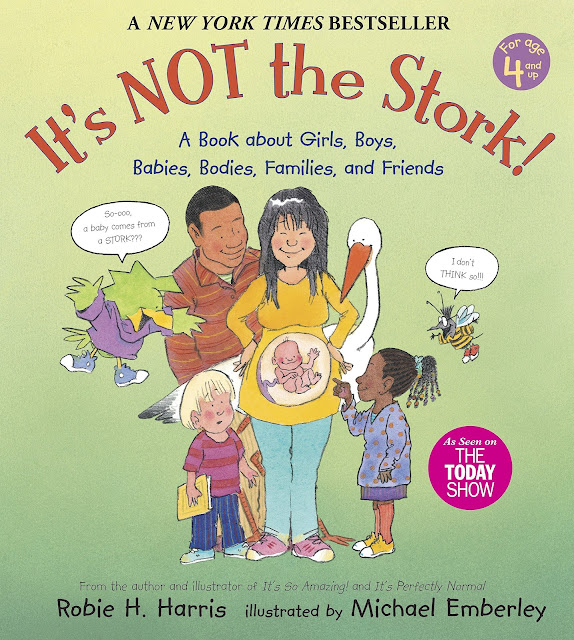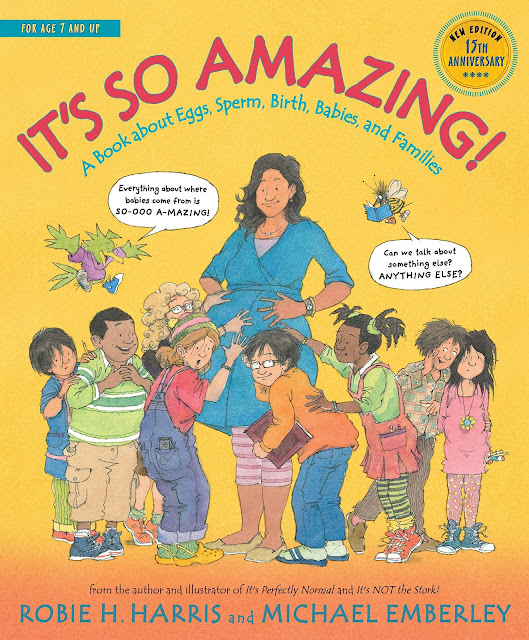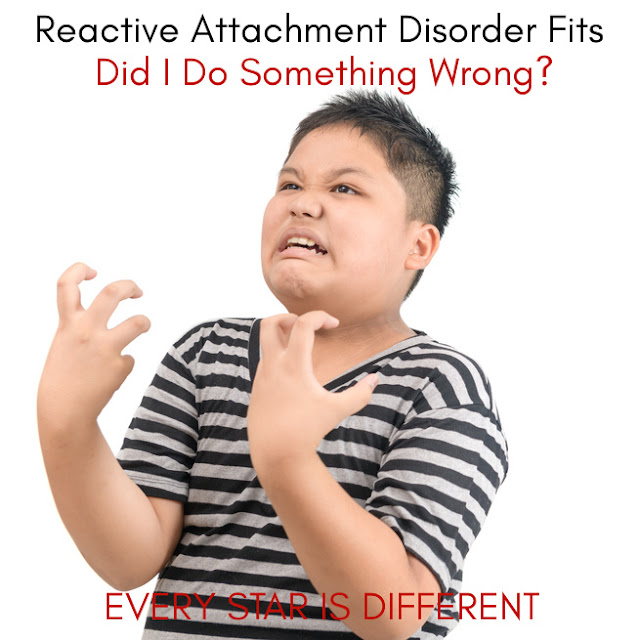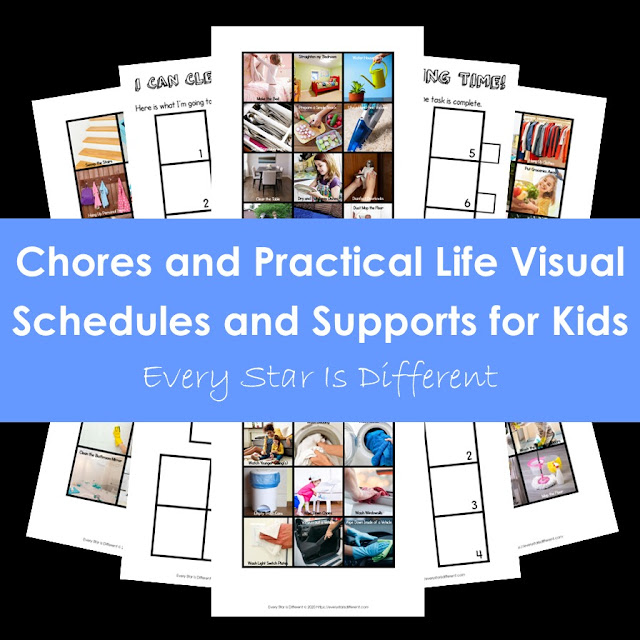Free Printables
How to Teach Children About Their Changing Bodies and Sex Education
10 Week Post Residential Update: Behaviors
I have been promising an update for some time and have finally been able to sit down and do so.
I am sharing behavior information in hopes that it will help others and because Sunshine has consented. Reactive Attachment Disorder and mood disorders can be hard.
A return from residential treatment, especially four placements in almost three years is anything but easy, even if visits have gone well.
There is a lot of adjusting, a lot of testing, and a lot of trauma to work through.
No return will go perfectly.
The goal is safety and slow improvement over time as everyone feels comfortable with each other and accepts the current arrangement.
10 Week Post Residential Update: Behaviors
Before I share Sunshine's behaviors from the past ten weeks, I want to share how she was doing in her last residential treatment center during the months of September and October.
September 2022 Behaviors in Residential
- 254 Disruptions
- 48 Physical Aggressions
- 5 Elopements
- 9 Lack of Safety Awareness Incidents
- 9 Threats of Harm
- 13 Self-Injurious Behaviors
- 11-Other
October 2022 Behaviors in Residential
- 197 Disruptions
- 26 Physical Aggressions
- 13 Elopements
- 8 Threats of Harm
- 4 Self-Injurious Behaviors
- 3 Property Destruction
You may be wondering why in the world she was sent home.
It was decided by her IEP team that her current residential placement was not meeting her needs.
The current residential team was unwilling to work with our family and our local community professionals regarding what we know and has been documented to work for Sunshine.
It has been proven in multiple settings that ABA (incentives and reinforcers) only increases anxiety, causing significant behaviors, instead of decreasing them. The residential team kept insisting that this system be used.
Based on success at a previous residential treatment center with a personalized emotional regulation plan that met Sunshine's needs, AND an entire year of successful overnight visits with family in hotels and at home, the community wanted to give Sunshine a chance to return home and show she could handle it.
Below you will see a calendar of behaviors for each month so far. I have broken them down below the image, so you can see up close what is written under each date.
All of the days with no behaviors recorded, means there were ABSOLUTELY NO BEHAVIORS!!!
November Behaviors
The initial transition home was definitely an easy one in regards to significant behaviors!
November 24, 2022
- Screaming
- Kicked door
- Head banging
November 30, 2022
- Screaming
- Moderate Aggression towards Mom
December Behaviors
I must admit, in December we were getting a little nervous as the aggression towards Mom and Dad was definitely increasing, but after we set the strict and firm boundaries, the aggression has stopped.
December 2, 2022
- Screaming
- Head banging
- Biting hand
December 13, 2022
- Screaming
- Severe aggression towards mom (left bruises on Mom's arm)
- Head banging
- Biting hand
December 14, 2022
- Screaming
- Moderate aggression towards mom
- Head banging
- Biting hand
December 17, 2022
- Screaming
- Moderate aggression towards mom
- Head banging
- Biting hand
December 21, 2022
- Screaming
- Mild aggression towards Dad
- Kicked van seats and van roof
December 26, 2022
- Screaming
- Mild aggression towards Dad
- Head banging
- Biting hand
January Behaviors
Though we still have a ways to go in January, including her manic and depressive episodes, we're feeling pretty confident about improvements that Sunshine is making.
January 1, 2022
- Screaming
- Kicked door
January 2, 2022
- Screaming
- Kicked door, wall, and bed
If you'd like to read more details about this episode, you can read about it in the post below.
January 2, 2022
- Screaming
- Kicked couch and table
January 13, 2022
- Screaming
- Kicked couch, wall, and window
- Biting hand
January 15, 2022
- Screaming
- Kicked furniture dressers, bed, and trunk in parents' room
- Head banging,
- Biting hand
If you'd like to read more details about this episode, you can read about it in the post below.
January 15, 2022
- Screaming
- Kicked wall
Things that have Influenced Behaviors
Swimming three times a week started December 28, 2022 with the exception of weeks when we have been sick.
Swimming helps Sunshine stay regulated in such big ways!
Everyone in the family was extremely sick for two weeks in December before Christmas with high fevers, horrible coughs, runny noses, etc. Routines were not normal.
Everyone in the family has been sick January 8th through the present with runny noses, coughs, chills, and muscle aches. Only one person had a fever this round. Thankfully routines have remained in full swing, but people are definitely grumpy.
The Best News
Sunshine expresses how happy she is to be home with her family on a daily basis.
For a child with Reactive Attachment Disorder, this is huge. Her residential experience definitely helped her decide that she wants to be with her family.
Sunshine is using kind words, manners, and appropriate language except for during some behavior episodes.
In residential, it was reported that she used foul language on a daily basis, directed towards others.
Sunshine has not had a single battle about food since being home.
This was a HUGE issue in all of her residential placements and at home before she went to residential.
Sunshine has not had a single behavior related to peers or siblings.
Her biggest struggle in residential and at home before residential was interactions with peers. There were screaming fits. There were physical fights.
There have been times when Sunshine has wanted to kill family members and had a plan to do so. You can read about them in the posts below.
Sunshine has only had one battle during learning time.
Before residential, Sunshine was attending a private day program because behaviors were too severe to learn at home. In residential, she struggled significantly during her school day.
Sunshine is thriving with the use of Internal Family Systems Therapy with parents at home.
After seven therapists at home and in residential, we've finally found a therapy that works, and it's one that my husband and I have been using ourselves for over two years now.
Sunshine still has a long ways to go, but compared to how she was doing, she is doing amazing after ten weeks of being home.
We hope and pray she continues to choose to be with her family and has the desire to put the work in to remain home with us.
For those who would like to continue to follow Sunshine's journey, be sure to subscribe to our free newsletter by clicking on the link below.
Reactive Attachment Disorder Fits: Did I Do Something Wrong?
Warning: This post contains information about behaviors at home after receiving residential care, related to Reactive Attachment Disorder, and may be triggering to some.
This article is about Reactive Attachment Disorder Fits and the question that caregivers most ask themselves, "Did I do something wrong?" I am the parent of two adopted children with Reactive Attachment Disorder.
Sunshine is upstairs playing with my husband, as I prepare lunch in the kitchen.
The usual thoughts keep going through my mind. My Monster Part, Not Good Enough Part, and Problem Solver Part, and The Right Thing Part were working together.
What could I have done differently?
How could I have responded better?
Why wasn't what I did enough to make it stop?
Why didn't what worked last time, work this time?
Did I do something wrong?
Reactive Attachment Disorder Fits: Did I Do Something Wrong?
Sunshine had a long Reactive Attachment Disorder fit this morning.
It occurred in my bedroom after she had finished helping me sort laundry.
Next on the schedule was taking a bubble bath and getting ready for church.
Church was going to be at home this week because Bulldozer and Princess are sick.
Sunshine loves her bubble baths.
She loves wearing a dress for church.
I didn't see this battle coming.
The Start of the Reactive Attachment Disorder Fit
"I hate church! It's boring."
"That sounds hard. Church can be boring." I responded as positively as I could, validating her feelings."
"How about we grab your clip board, paper, crayons and some books for you to use during church time, like you did last week. You loved that."
"I don't want to do that! That's boring!" Sunshine's voice was growing louder and more agitated.
"If you aren't up to having church at home today, the rest of us can do church later after you go to bed, if you'd like."
We do not force our kids to go to church or worship as we choose to worship. They always have a choice.
"NO! I want to do church with you!" With that statement from Sunshine, I knew it was time to listen. Perhaps she just needed to communicate feelings and then she'd be okay.
Unfortunately, all of these responses proved useless.
Sunshine wanted to pick a fight. Her Devil part was front and center.
The Reactive Attachment Disorder fit was beginning.
My husband sensed it too, and came into the bedroom.
Sunshine had already started rolling around the floor, kicking the bed and trunk.
The Reactive Attachment Disorder Fit
"What! What do you want? Why are YOU here?" she looked right at my husband.
I tried once more to help Sunshine walk through her choices calmly and rationally.
It didn't work.
"You don't love me! You're stupid. I HATE you!" Sunshine was becoming more and more agitated.
The space was small with so many ways for her to hurt herself.
My main concern at this point was keeping Sunshine safe until the fit was over.
I came closer to her and removed her glasses so they wouldn't break. She started yelling at me again.
"Give me my glasses!"
"I will give them back to you as soon as I know you're safe." Sunshine stood up and started coming towards me.
I hugged her and reminded her that I loved her and we needed to stay safe. I didn't want her to hurt herself, anyone or anything else.
Miraculously, I was somehow able to get us both safely to the floor where I continued to try to soothe her.
Sunshine would have none of it.
Instead she started to kick and grab at anything she could.
My husband was removing items out of the way as quickly as possible, strategically sitting in front of things that he could not move out of the way that were dangerous.
I was trying to protect Sunshine as she thrashed.
The Reactive Attachment Disorder fit was in full swing. All we could do was keep everyone safe and wait until she was done.
We tried remaining silent, so there wouldn't be anything for her to pick a fight about.
"Why aren't you talking? Why are you ignoring me?" Sunshine was screaming at us.
Nothing we would choose to do at this point, would make any difference. Sunshine was ready to have a battle about anything and everything.
She banged her head on the floor.
We put a stuffed animal under her head as quickly as we could. Under the rug was ceramic tile. It was hard.
Sunshine decided to bite her hand. Thankfully she didn't break skin.
She rolled around, throwing a fit, bringing more and more topics to the conversation.
Bath time.
Craft time with Mommy
Church at home.
Play time with Daddy.
She knew the schedule for the morning and had been looking forward to it. Jessica (the kitten part) had arrived, feeling the weight of the consequences of having a Reactive Attachment Disorder fit and was furious at the Devil part.
A screaming fit between the two parts came next, all the while there was more thrashing and kicking.
I remained calm the entire time, setting firm boundaries when necessary.
My husband and I reminded Sunshine we don't take things away.
Only she does that when she chooses to be unsafe in the moment.
When she chooses to throw a fit at bath time, she's too unsafe to be in the bathtub.
When she chooses to pick a fight when it's time for church at home, she's too unsafe for church at home.
She can always try another day.
When she chooses to stop throwing a fit, we pick up with her schedule according to the time of day.
Sunshine continued to thrash around throwing a Reactive Attachment Disorder Fit for an entire hour, her Devil part making demands.
And then finally, she decided she was done and ready to be safe for play time with Daddy.
My plans for a fun morning together had been replaced with her need to battle.
Did I Do Something Wrong?
As I make tacos for lunch, I replay this scenario over and over in my head, wondering what I could have said or done differently. There had to be a way to stop these fits.
Princess enters the kitchen and senses my mood. I tell her I'm having one of those, "I'm a horrible mom" moments. These fits take so much out of me.
She looks at my watery eyes.
Princess had been washing dishes in the kitchen, which is right next to my bedroom, when everything happened this morning. We had even carried on a positive and friendly conversation in the middle of it.
My kids know they can always talk with me during their sibling's Reactive Attachment Disorder fit so that they know everyone is safe and okay.
"Mom, you did everything right. You couldn't have done anything differently. That's a Reactive Attachment Disorder fit. Sunshine decided she wanted to pick a fight and she did."
Princess' comments meant so much, as she herself also has Reactive Attachment Disorder, but is healing and past the fits.
Princess continued.
"When I threw my fits, I just wanted to fight. I had so much negative energy, I had to get it out. And so I did, until I felt better."
I share this story, because it is so easy as a mother of a child with Reactive Attachment Disorder to feel like things are your fault, that if you just changed something, these fits wouldn't happen.
You can follow all of the same steps that I did:
- Validate feelings.
- Offer ideas and solutions to choose from.
- Pause to listen.
- Set safe boundaries.
- Keep everyone safe.
And the fits will still happen.
As Princess has said, that need to fight is part of Reactive Attachment Disorder.
You are good enough.
You Did Everything Right!
Ultimately, the child with Reactive Attachment Disorder needs to be able to get to a point where they can choose not to pick the fights.
In our home, the boundary not to be violated is hurting others. If Sunshine does hurt others, we do what we've been directed to do by professionals, psychiatrists, and law enforcement.
I know that may seem impossible at the moment that a child can outgrow these Reactive Attachment Disorder fits.
But I'm here to say, Princess did it.
And truth be told, her longest fit was eight hours, just without the physical aggression.
It is possible to heal.
It just may take a LONG time.
For those who would like to follow our journey with Reactive Attachment Disorder, be sure to subscribe to our newsletter by clicking the link below.
Click HERE to Subscribe to our FREE Newsletter
If you liked this post, you may also enjoy the resources below.
Internal Family Systems: A Child's Parts
Warning: This post contains information about behaviors at home, related to Reactive Attachment Disorder, Bipolar, Depressions, Mania, Psychosis and Autism Spectrum Disorder and may be triggering to some.
"Why do you HATE me so much? I know you do! Why are you so angry at me?"
Sunshine's Devil part was front and center. I was so thankful for my knowledge of Internal Family Systems and how to understand a child's parts.
No matter how many times I reminded her that I loved her and that I wasn't angry, the part could not accept those truths.
Sometimes the Devil part will calm if I offer a hug, but not today.
"I don't want to be a part of this family! I HATE you all!"
I paused, sitting on the floor, so Sunshine could continue and know that this was not a threatening situation.
"Why aren't you listening to me?! Why aren't you talking?" The Devil part did not enjoy silence.
I repeated back exactly what she had just said to me to show I was listening.
The Devil part seemed satisfied.
Knowing which part I was talking to, and that I had its attention, I tried to ask questions.
"Are you angry with me?"
"YES!" the Devil part responded instantly.
"Why are you so angry?"
"I don't want to talk about it! Stop talking to me!" The Devil part was not in the mood to talk.
At this point I knew I just had to ride the wave.
Sunshine had now transitioned from standing, to sitting on the bed, and now to rolling around on the floor, like an animal, her limbs flailing in every direction.
The Sabretooth part was here too.
Any time she ran into something, whether it be her bed, door, or wall, she would kick and scream even more.
The same conversations occurred again and again. At times the Devil and Sabretooth parts would threaten me or try to punch me.
I let them know that I wasn't scared and called their bluff every chance I had the opportunity.
Calling their bluff seemed to calm the parts down, as my response was not how others had responded in the past.
I set strict boundaries regarding how and when the Devil and Sabretooth parts could touch me and what was expected to move forward with the day, making sure the parts knew the consequences for any and all actions.
Time was at a stand still until I knew Sunshine could be kind, safe, and respectful.
This episode lasted over an hour, but no one was hurt. No one needed restraining or intervention. I just kept talking to the parts.
It all started when I let Sunshine know it was time for her morning routine which consists of: making her bed, picking up her room, taking a bubble bath, putting lotion on, getting dressed, brushing hair, and brushing teeth.
None of this is an issue if many of her other parts are in charge, or if the Self is leading, but today, the other parts were nowhere to be found, neither was the Self.
The Devil part loves to pick a fight and the Sabretooth part loves to jump in and attack.
How did we get to this point of understanding that not ALL of Sunshine feels one way or another, but instead just a part of her does?
Teaching a Child to Identify Parts
One day on one of our walks, Sunshine was explaining that a part of her brain felt and thought one thing, while another part felt and thought the total opposite. It was driving her crazy.
Sunshine was able to describe and name these two parts, the Devil and the Angel, who were completely polarized, and that's where her journey with Internal Family Systems began.
Since that walk, she's identified and named multiple parts that help us navigate her struggles and behaviors.
When we know what parts are in charge, we are better able to navigate the situation and keep everyone safe.
Each part feels and thinks differently. The goal is to calm the parts and not trigger them.
With Sunshine's permission, I am sharing her parts with you today. She feels that by sharing, she may be able to help others who struggle like she does.
Understanding how to respond to each of her parts, what calms them, and what provokes them has been what we've been working on most since she's been home, especially when two parts combine efforts, like the Devil and Sabretooth.
Please keep in mind that Sunshine has been diagnosed with:
- Reactive Attachment Disorder
- Mood disorder (bi-polar) with Psychosis
- Autism Spectrum Disorder
- ADHD
- Cranial Facial Microsomia
- Vision impairment in her right eye
- Intellectual Disability (IQ below 70)
Sunshine was adopted through foster care after being removed from her family of origin at birth and placed in a foster home where she was not cared for properly.
Everyone's parts are based on trauma they have experienced along with struggles and disabilities they have.
Internal Family Systems: A Child's Parts
The average adult is said to have 10 to 22 parts.
Each part develops as a way to survive trauma the person perceives is occurring in their lives.
Every person is different in how they perceive trauma, how they cope with it, and how their brain and body respond to it.
So far, Sunshine has identified the following parts.
All of the names and descriptions of Sunshine's parts have come from her, and in her words.
Please be aware that children's brains are still growing and changing, so working with children's parts is different than working with adult's parts.
Devil (He)
Wants me to hurt other people and myself. Believes that I am ugly and worthless and that others hate me and don’t want to be with me.
Sabretooth (He)
Works with the Devil. Thinks about my birth mom and foster mom. Feels scared, gets angry, and attacks.
Angel (She)
Wants me to make great choices. Cannot defeat the Devil by herself.
Powerful Magical Creatures (They)
Multiple animals, both make believe and real, with magic powers to work with the angel to fight off the devil. They cannot kill him, but they can wound him.
Some include centaur, dragon, lion, etc. They carry shields. (Sunshine becomes the creatures and they accompany her.)
Avatar (She)
Has magical powers to give to Mommy and Daddy for protection and to turn them into Avatars so they can help me fight against the Devil.
With Mommy and Daddy as Avatars, I can defeat the Devil. (Sunshine also transforms into an Avatar.)
Scary Creepy Crawlers (They)
Capture people to keep them safe from the Devil. They are willing to do horrible things to the Devil and followers to keep “the people” safe like suck blood, cut off heads, etc. (Disturbing play scenarios may occur.)
Ice Powerful (She)
Dresses provocatively in whatever she wants. Walks on water. Talks to animals and can control the world around her. She is VERY strong and throws ice blocks at the Devil to help the Angel.
At other times she can work with the Devil.
Scary Monster (He)
Love Bug (She)
Gives hugs, kisses, etc. to show others love. Physical affection helps me know that others are safe and happy.
Mulan (She)
Jessica the Kitten (She)
Why Do we Use Internal Family Systems with a Child?
When we know Sunshine's parts, we are able to understand what she's thinking and how she's feeling at any given time.
Actions and words that may be disturbing are less scary because we know what part feels them, and that it's only a part, not all of Sunshine.
Once we all know and understand her parts, we can provide the support Sunshine needs in situations to help her regulate her emotions. As she becomes more comfortable with her parts, she is able to start doing this on her own.
Eventually, Sunshine will begin to unburden her parts, which will help everyone, but that will be a long way off.
What Is Our Experience with Internal Family Systems Therapy?
After eighteen months of studying Internal Family Systems with a trained IFS therapist, reading Internal Family Systems Therapy by Richard C. Schwartz more than once, and identifying my own parts, I felt that IFS was the perfect fit for our family, after all of the trauma we've experience.
My husband, a retired mental health therapist, worked with me, after he identified his parts to better understand how our parts interact. The improvements in our marriage have been SIGNIFICANT.
My older three children started to notice some pretty amazing changes in our marriage, and as individuals, and asked if they could also learn about Internal Family Systems and work to identify their own parts.
These are the same kids who have been forced to participate in family therapy due to their sister's struggles and have despised it every step of the way.
Dinomite, Bulldozer, and Princess have chosen a mental health elective in our homeschool curriculum, so that they can focus on learning about their parts.
Their discoveries and work, including identification and drawings of their parts, has been extraordinary.
Our communication as parents and children since sharing our parts has improved immensely.
But if I had to choose one person that Internal Family Systems has benefited most in our home, it would be Sunshine.
No other therapist to date has used Internal Family Systems with her, despite having had seven therapists in her lifetime already at eleven years old. IFS was something we introduced at home.
Just in the last month, we cut her behavior outbursts during manic and depressive episodes from 20-45 minutes down to five minutes each. This is all because we knew and understood what her parts needed and wanted, versus what would trigger them.
All of us are made up of parts, because all of us have experienced trauma in our lives. When we focus on identifying and nurturing these parts, lives change for the better.
IFS therapy works for everyone, including those with developmental disabilities, which has been one reason it's been fabulous for Sunshine.
For those who are interested in following our family's story and learning more about Internal Family Systems, be sure to subscribe to our free newsletter by clicking the link below.
Click HERE to Subscribe to our FREE Newsletter
If you liked this post, you may also enjoy the resources below.

.jpg)











.jpg)
.jpg)



















.jpg)







